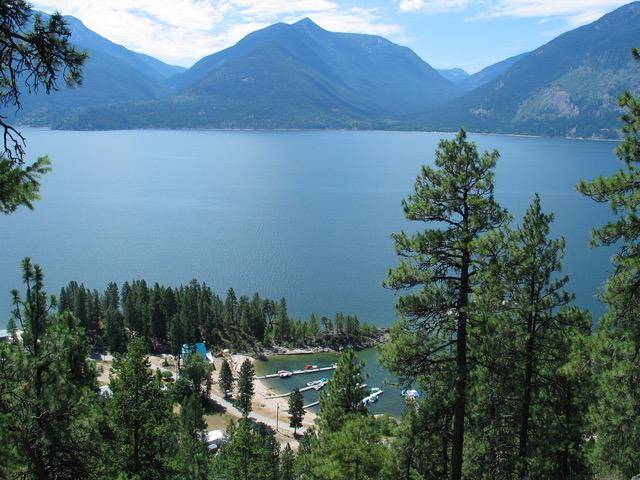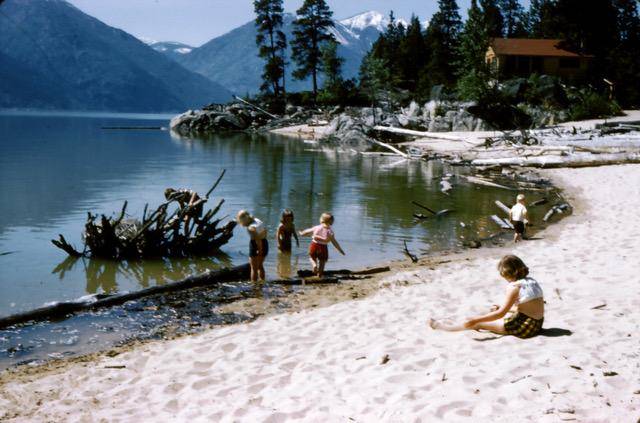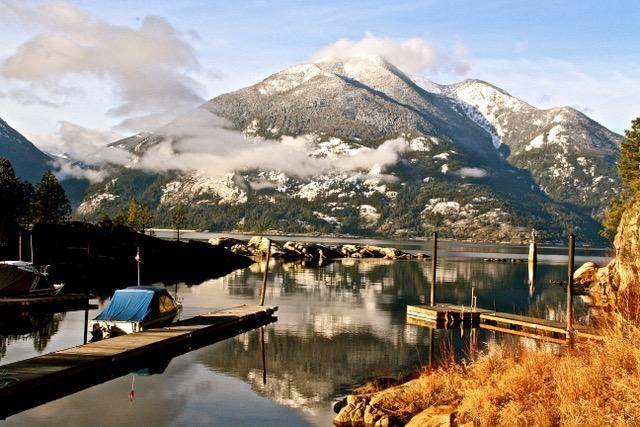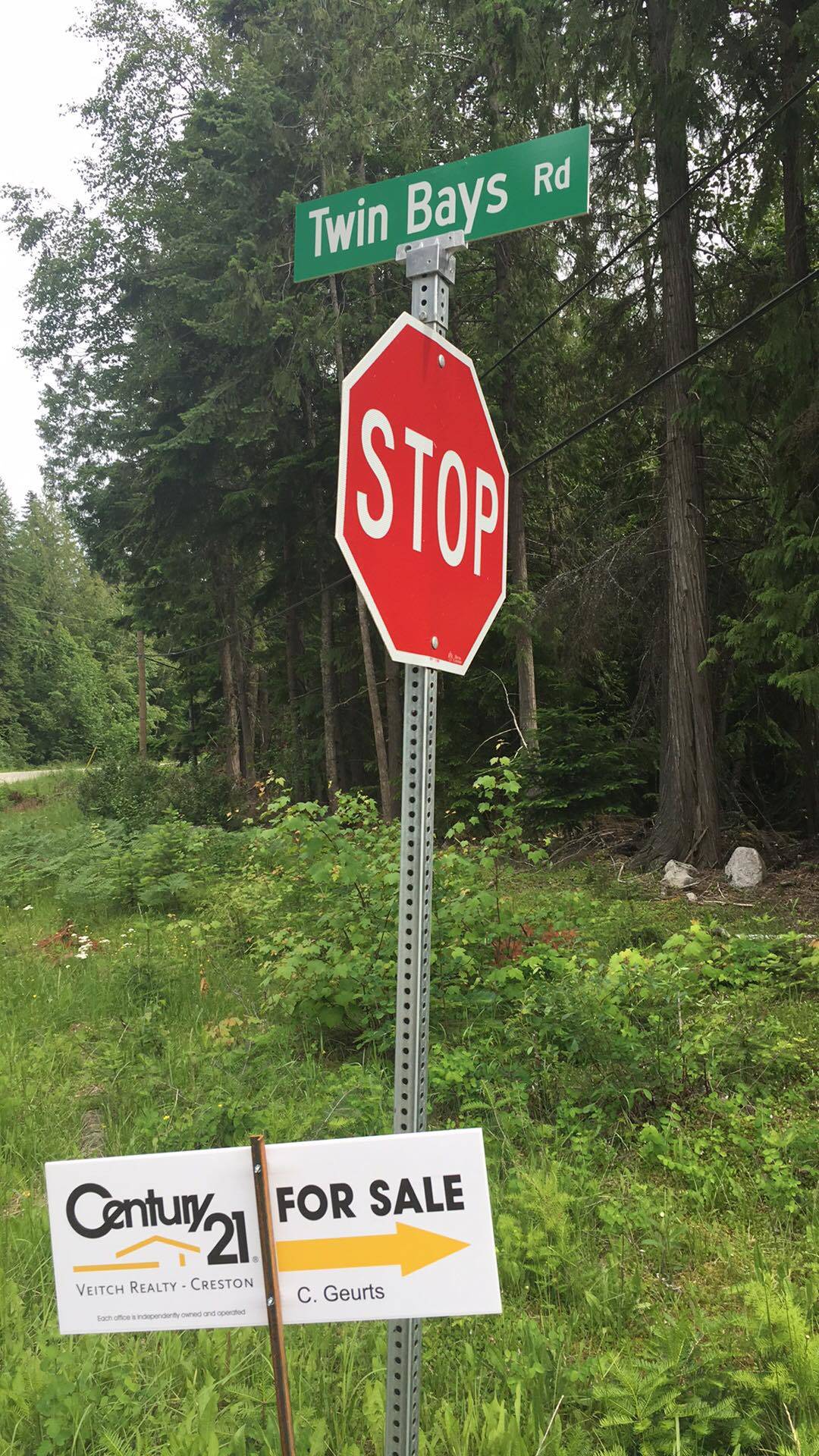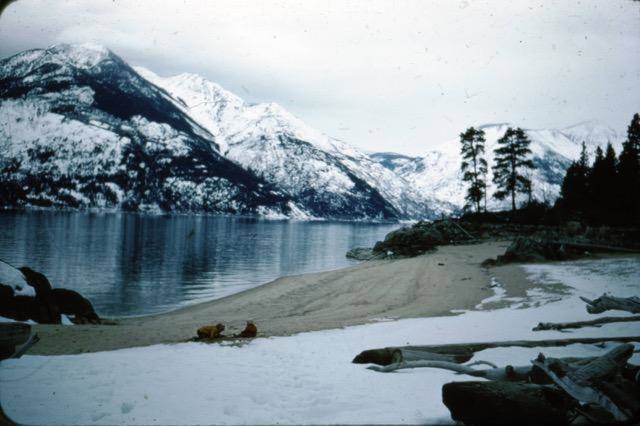Two hundred thirty-fourth in a series on West Kootenay/Boundary place names
TENT CITY
In Lardeau Duncan Memories, Ernie Alexander wrote: “[T]he area around Healy Creek and Tenderfoot Creek was known as Tent City. Several hundred tents were said to have been pitched there on both sides of the river.”
He didn’t give a date, but it presumably was in the 1890s or early 1900s. No contemporary references have been found, however.
TWIN BAYS
It’s officially recognized as a pair of bays on the east side of Kootenay Lake, near the south end, but it’s also a community name. It was included as Twin Bay in the 1918 Wrigley’s BC directory, which called it “a steamer landing on CPR Nelson-Kaslo-Lardo route,” although no residents were listed.
The plural form first appeared in the Creston Review on Sept. 10, 1920: “The sale of a quarter section of land at Twin Bays is reported this week, Mrs. Jones of Kuskanook being the buyer, who will utilize it for a grazing area for the present.”
The name is perpetuated by Twin Bays Road, Twin Bays Village, and Twin Bays Marina.
There’s also a Twin Bays Creek that flows into Kootenay Lake.
Another Twin Bay appeared on the CPR’s Kootenay Lake timetable in 1916. It’s on the west side of the lake, north of Woodbury, and is perpetuated by Twin Bay Road.
TYE
Like Twin Bays, this railway point is also near the south end of Kootenay Lake, but on the west side.
According to Roger Burrows in Railway Mileposts: British Columbia Vol. II, it was “named after William Francis Tye (1861-1932), CPR’s Columbia and Western Railway construction engineer and CPR’s chief engineer from 1904-06.”
The name was bestowed within weeks or months of Tye’s death in January 1932. The earliest reference is in the Creston Review of May 27, 1932: “Arthur Lombardo left on Tuesday for Tye, where he will spend the next week or so with his brother, Frank.”
Tye showed up in the 1932 Wrigley’s BC directory as “a flag station on CPR, 46 miles from Nelson.”
Although Tye is not easily accessed by road, the name remains in limited use.
WESTBRIDGE
This community, 13.5 km north of Rock Creek and 35 km south of Beaverdell, was first mentioned in the Boundary Creek Times on Dec. 2, 1899: “After journeying eight or nine miles up the main Kettle river, one reaches the mouth of the West Fork … Near this junction are found two infant villages, Bridgeport and Westbridge. The later [sic] place has a few log cabins, a general store and a log hotel …”
Bridgeport was never mentioned again but Westbridge has survived to this day. Its post office opened on March 1, 1900 and closed on July 6, 2006. A retail postal outlet opened on Oct. 4, 2007 but closed temporarily on Oct. 31, 2010 while Canada Post sought a new postmaster. After an unsuccessful search, the office closed permanently on Sept. 23, 2011.
WESTON
This stop on the Great Northern Railway was one mile west of the Grand Forks station, which presumably was the source of the name, although there was also a Weston in Ontario, now part of Toronto.
Weston was first mentioned in the Grand Forks Evening Sun of Feb. 21, 1905, which announced the names of the stations on the new branch line from Grand Forks to Phoenix.
The Weston yard and passenger station lasted until 1930, but by then the name had long since fallen out of common parlance. The last contemporary mention was in the Sun on Oct. 15, 1920.
WOODBURN/WOODRUFF
Woodburn was listed in the 1918 Wrigley’s BC directory a “a flag station on the GN Railway, 13 miles east of Phoenix and 11 miles west of Grand Forks.” Six residents were listed, all ranchers.
It was still listed in 1921 — but there was also a listing for Woodruff, with the same location and some of the same residents. In 1923, both were still listed but with the notation “see names under Eholt.” In 1924, only Woodburn was listed. It disappeared after 1926.
Where did the name or names come from?
The Woodburn mining claim owned by S.C. Gates, was first mentioned in the Grand Forks Evening Sun on June 5, 1903. It was later acquired by the Phoenix Mining, Smelting and Development Co. The Great Northern ran through an associated claim.
Meanwhile, Thomas A. Woodruff of Chicago was president of the Greenwood-Phoenix Tunnel Tramway Co., incorporated in 1911. Either or both could have been the namesake.
